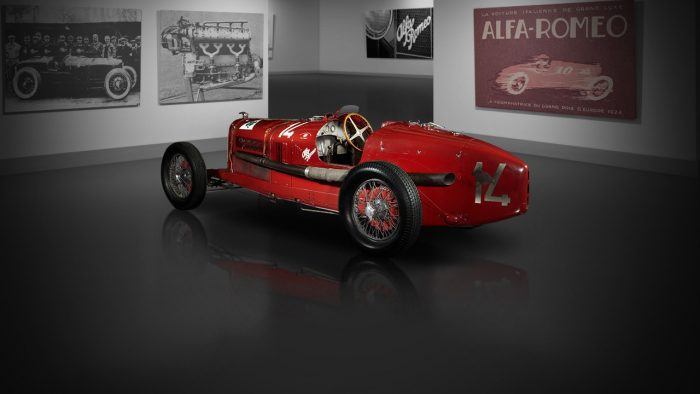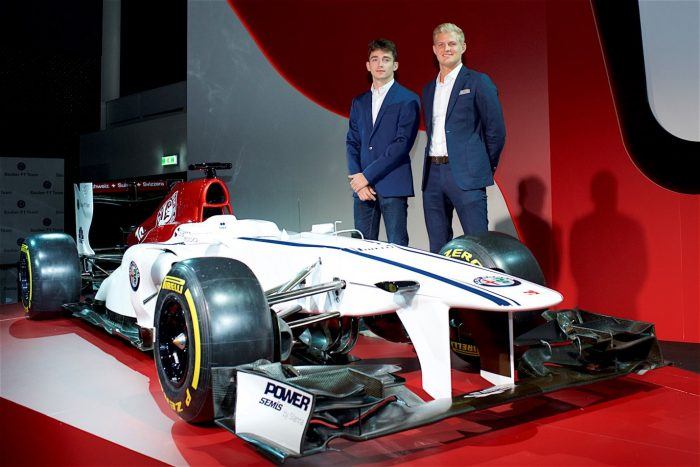Our hopes are beautiful, our realities might be less so. Here it is, the Alfa Romeo Sauber C37 grand prix racer for the upcoming season. The attention to aero detail is self-evident throughout the car, the hybrid powerplant is the latest spec Ferrari, and the drivers are young and hungry with something to prove.
Hard Truths
Look: Everybody wants to win, and especially at this level of competition, but desire does not equal results. So it’s best to get the hard realities out of the way right up front: Sauber is not going to win this year. And they most likely won’t win next year. As good as the organization is (and it is very good) they are in the sharpest of sharp ends of competition. The difference between the front row of the grid and the back can be less than two seconds. And when that’s the fine gradations you’re trying to work your way through, the struggle is fierce.
Best of the Best
The team, based in beautiful Hinwil, Switzerland, has all the right ingredients. They have one of the best wind tunnels in the world. And I don’t mean in the racing world, I mean in the entire world. It’s a full-on rolling road, with a movable wall setup and a test area big enough to fit two full size race cars, side by side or line astern. They have a computer rendering farm for running CFD calculations the size of something from the Pixar studios. The team is run by a squad of Swiss/French technocrats that should be monitoring anonymous crypto-banking concerns and/or working on Exocet missiles. And, as anyone with eyes can see, they now have sponsorship, with glorious branding, from Alfa-Romeo.
At the moment, this is not a full, factory-backed deal from Alfa, just a branding and marketing arrangement, but if things pick up, there’s no real reason to prevent Alfa from plunging more deeply into F1.

The Alfa Romeo P2 Gran Premio lead the team to the inaugural Automobile World Championship in 1925. Photo: FCA US LLC.
Returning Legacy
This comeback restores the name of Alfa Romeo to the top of the racing world. And, although they haven’t been a force in top-line racing recently, you don’t have to be much of a historian to know they have a top-flight resume. Featured on the engine cover of the Sauber C37 is the Quadrifoglio, the legendary badge that has appeared on Alfa Romeo’s top performance cars since 1923. The four leaf clover is to Alfas what that prancing horse on a yellow shield is to Ferrari: This is the car that means business. Ever since Ugo Sivocci (one of my favorite Ugos) won the Targa Florio in 1923 with a Quadrifoglio on the hood of his Alfa Romeo RL, good luck has followed Alfas.
Lucky Charm
The symbol was on Brilli Peri’s “P2” when he triumphed in the first “Motor Racing World Championship” at Monza in 1925, gaining the first of Alfa Rome’s five World Titles, and garnering the Turin company its first, and most lasting nickname: “Il Primo Automobili Campione del Mundo” or “First Automobile Champion Of The World.” Ever since, Alfa has made its marque with some of the greatest drivers in all of history. Nino Farina and Juan Manuel Fangio, Piero Taruffi, Luigi Fagioli, Mario Andretti, Louis Chiron, Antonio Ascari, Alberto Ascari, Achille Varzi, Nino Vaccarella, and of course, the greatest of all time Tazio Nuvolari.
Alfa Romeo has an incredible credence of history behind it, and now all that weight is focused on Sauber for 2018.
“Our target ahead of 2018 is clear: We have to catch up with the field and to continue improving our performance during the course of the season. We have put lots of energy and commitment into the development of the C37,” explained Frédéric Vasseur, Sauber Team Principal. “The return of Alfa Romeo to Formula 1 sets another milestone in the team’s history, and I am proud that such a historical brand has chosen us for their return to the sport. We are eager to start the 2018 season as the Alfa Romeo Sauber F1 Team.”
That is, of course, saying a lot, demanding a lot, and expecting a lot.
Eye Sores
The C37, of course, looks different to last year’s C36. There were whole rafts of new technical regulations that have now affected all the cars in ways big and small. The most obvious is that repugnant halo safety structure that surrounds the cockpit. Everybody has to use it, so everybody has to suffer the aesthetic malady of driving or watching a car that looks like it has part of a colossal flip-flop attached to it.
Racing In Red
The less obvious, more subtle changes are aerodynamic-related. Check out the engine air inlet details: scoops within scoops within scoops. The tail is tightly tucked-in and the rear wing end-plates look like cheese graters designed by a psychopath. The specificity on the front wing and barge-boards is equally Baroque.
And now all of this is put in the hands of the young, up-and-coming Charles Leclerc and the journeyman racer Marcus Ericsson, and painted a glorious deep red and bright white. It could use more red. But that’s just me.
Tony Borroz has spent his entire life racing antique and sports cars. He is the author of Bricks & Bones: The Endearing Legacy and Nitty-Gritty Phenomenon of The Indy 500, available in paperback or Kindle format. Follow his work on Twitter: @TonyBorroz.
from Automoblog.net http://ift.tt/2pkNeQh

No comments:
Post a Comment